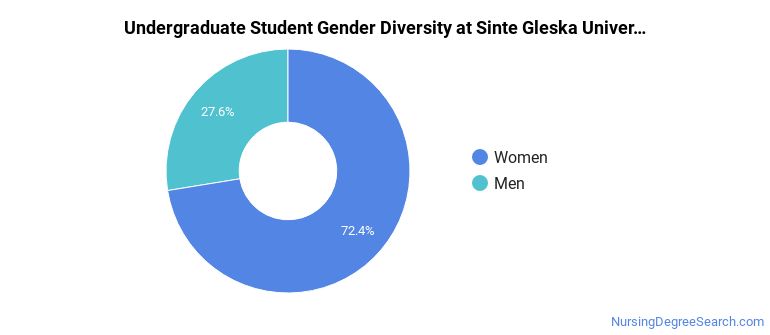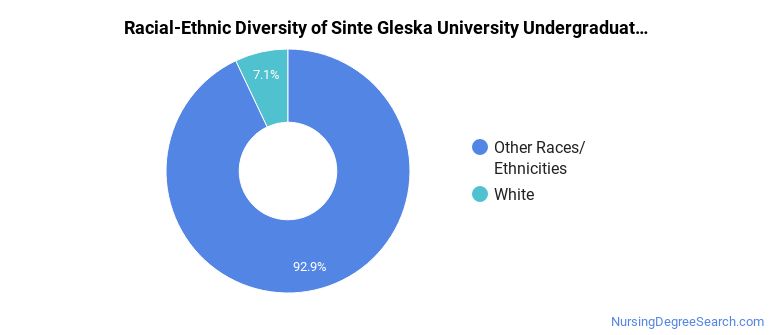Sinte Gleska University Nursing Programs
Sinte Gleska University is a public institution situated in Mission, South Dakota. Sinte Gleska University is located in the countryside, which is perfect for students who enjoy a rural lifestyle.
Where Is Sinte Gleska University?

Contact details for Sinte Gleska University are given below.
| Contact Details | |
|---|---|
| Address: | E. Highway 18, 101 Antelope Lake Circle, Mission, SD 57555-0105 |
| Phone: | 605-856-8100 |
| Website: | www.sintegleska.edu |
Can I Afford Sinte Gleska University?
Sinte Gleska University Undergraduate Student Diversity

There are also 63 graduate students at the school.
Gender Diversity
Of the 156 full-time undergraduates at Sinte Gleska University, 28% are male and 72% are female.

Racial-Ethnic Diversity
The racial-ethnic breakdown of Sinte Gleska University students is as follows.

| Race/Ethnicity | Number of Grads |
|---|---|
| Asian | 0 |
| Black or African American | 0 |
| Hispanic or Latino | 0 |
| White | 11 |
| International Students | 0 |
| Other Races/Ethnicities | 145 |
Geographic Diversity
South Dakota students aren't the only ones who study at Sinte Gleska University. At this time, 2 states are represented by the student population at the school.
Sinte Gleska University Nursing Concentrations
The table below shows the number of awards for each concentration.
| Major | Associate’s | TOTAL |
|---|---|---|
| Licensed Practical/Vocational Nurse Training | 1 | 1 |
| TOTAL | 1 | 1 |
References
*The racial-ethnic minorities count is calculated by taking the total number of students and subtracting white students, international students, and students whose race/ethnicity was unknown. This number is then divided by the total number of students at the school to obtain the racial-ethnic minorities percentage.
More about our data sources and methodologies.
